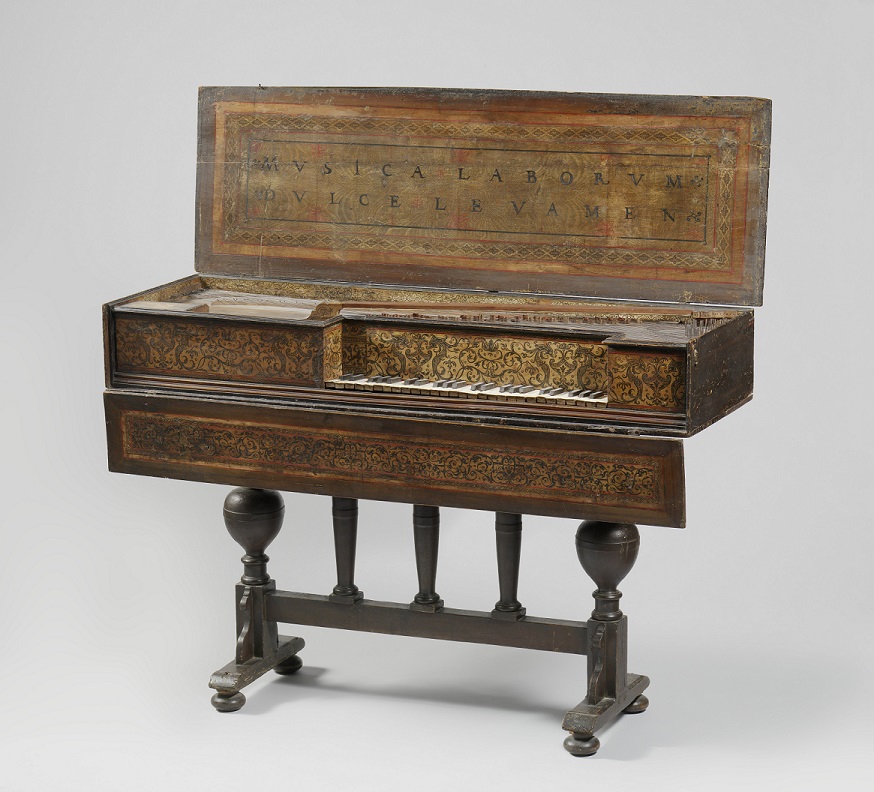
Virginal, attributed to Johannes Ruckers, c. 1640, Rijks Museum.
Do you play the piano? What about the harpsichord? Have you heard of a virginal before? If you haven’t, you’re not alone, but virginals used to be common household instruments, and anyone who was anyone had one.
Virginals are in the same family of instruments as the harpsichord. And though harpsichords look very similar to pianos and are played in the same way, the way they make sounds is different. While pianos produce sound by striking the strings with a hammer, the strings in harpsichords and virginals are plucked. The placement of the keyboard determines where the strings are plucked, and that changes the sound.
The virginal above is a muselar – we can tell because the keyboard is to the right – so the strings are plucked about a third of the way along. Muselars have a full and resonant sound, though you can also hear the mechanisms working because they’re so close to the soundboard. All virginals were beautifully decorated, and often had paintings or phrases on the inside lid. The phrase on this particular virginal translates as “Music is a sweet relief for labors.”
Though we don’t exactly when virginals were first created, it’s thought that they probably existed by the end of the 14th century. They were very popular instruments in the 16th and 17th centuries, with composers like William Byrd writing lots of pieces for the virginal.
We don’t know for sure why they’re called virginals, but it’s likely the name references young women. Virginals were commonly played by young women, and Vermeer created three different paintings featuring young women at virginals: The Music Lesson, A Lady Seated at a Virginal, and A Lady Standing at a Virginal.
Young women with the means to would have learned music – the lute and guitar were also popular instruments for women – to show they came from a good family. A musically inclined young woman would not only have been able to entertain others, but would also be pursuing more noble pursuits, rather than leading a life of debauchery. These qualities would help her to find a good husband, because sadly, marriage and motherhood were still the primary goals for most girls in the 16th and 17th centuries.
There was, however, one well known woman for whom marriage and motherhood were not in the cards. Elizabeth I, “The Virgin Queen,” was well-known for playing the virginal, and many think it was named for her. However, Elizabeth wasn’t born until 1533, long after the first mention of the virginal by name. Still, one has to wonder if Elizabeth was aware that rumors about her sexual status would be so pervasive that, nearly 500 years later, people would draw any links to it they could.
-Katie Weidmann
Social Media Manager
Girl Museum Inc.
You can see a demonstration of a muselar virginal in this YouTube video.
This post is part of our 52 Objects in the History of Girlhood exhibition. Each week during 2017, we explore a historical object and its relation to girls’ history. Stay tuned to discover the incredible history of girls, and be sure to visit the complete exhibition to discover the integral role girls have played since the dawn of time.
